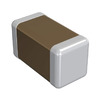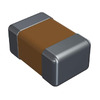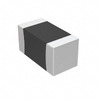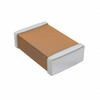H7 vs. H8 Batteries: The Ultimate Guide to Choosing the Right Power Source for Your Vehicle
2025-03-31
8570
Choosing the right car battery is important for making sure your vehicle runs well and stays reliable. This article takes a close look at two popular battery types: the H7 and H8. We’ll explain how they are alike, how they are different, and which cars they work best in. Whether you drive a small truck, a powerful sports car, or a big SUV, knowing the features of these batteries will help you choose the right one.
Catalog
Need to Know About H7 Battery

The H7 battery, also called L4 or 77L4, is a strong and useful battery that works in many types of vehicles. It fits well in small trucks and older models of cars like the Dodge Charger, Challenger, and Ram trucks. It’s also used in the Jeep Grand Cherokee, Jeep Wrangler, and Ford F-150. This battery gives the right amount of power (called cold cranking amps or CCA) to start your car in very cold weather around 0°F for 30 seconds. One good thing about the H7 battery is that it can also replace a 94R battery. This gives drivers more choices.
Some newer H7 batteries are wireless and can restart with just the push of a button. You don’t even need to open the hood to check them. They are light but still powerful, so they’re great for smaller vehicles too. But keep in mind: the U.S. and Europe have different rules for H7 batteries. If you move between these places, make sure to check the battery details first. Many H7 batteries now come with something called a Battery Management System (BMS). This makes the battery easier to take care of and helps it last longer. It also makes the battery more reliable and user-friendly.
Need to Know About H8 Battery
The H8 battery, also known as L5 or 88L5, is popular in high-performance cars and well-known European brands like Porsche, Lamborghini, Audi, BMW, and Camaro. New battery technology has made it possible to use lithium-ion batteries, which charge faster and give power more quickly. One cool feature of H8 batteries is that you can check how they’re doing using Bluetooth trackers. This makes it easier and safer for users.

H8 batteries are flexible, they can be used in both trucks and regular cars, no matter the shape or size. In good conditions, an H8 battery can last up to 9 years. But if the weather is rough, it might not last as long. With a cold cranking amp (CCA) of 900 and a steady voltage of 7.2 volts, the H8 battery gives strong, reliable power. That’s why it’s a great choice for people who need a tough battery for tough jobs.
H7 and H8 Battery Similarities
The H7 and H8 car batteries are very similar. They follow the DIN standard, which is commonly used in many European cars. Here's how they are alike:
• Voltage: Both the H7 and H8 batteries give out 12 volts of power, which is the standard voltage used in most cars today. This amount of power is enough to start the engine and keep all the car’s electrical parts working properly. That includes the headlights, radio, air conditioning, power windows, and even more advanced systems like navigation and parking sensors. Having a 12-volt battery means it can work well with almost all car models without any special adjustments.
• Width and Height: The H7 and H8 batteries are the same size when it comes to width and height. They are both 175 millimeters wide and 190 millimeters tall. Because they share these exact measurements, they can fit into many types of cars without needing any changes to the battery tray or the surrounding space. This makes them more convenient to use and easier to replace. This shared size also helps save time and effort when switching between the two models.
• Terminal Placement: The places where the battery cables connect called terminals are located in the same position on both the H7 and H8 batteries. This is important because it means the cables in the car will reach and fit the same way, no matter which of these two batteries is used. You won’t need to stretch the cables, move anything around, or buy special connectors. Because the terminals are in the same place, it’s much easier to switch between these batteries or use them in different types of vehicles without running into problems. This helps save time and avoid mistakes during installation.
• Uses: These batteries are built for cars that need more power than usual. Modern vehicles often come with many electrical parts that use a lot of energy. For example, these batteries can support cars with smart screens for navigation and entertainment, digital dashboards, heated seats, and power windows. They also work well in cars with advanced safety systems like backup cameras, parking sensors, automatic braking, and lane-keeping assist. Some cars even have features that stay on when the engine is off, like stop-start systems or keyless entry, and these batteries help make sure those systems work properly. Because of their strong and steady power, H7 and H8 batteries are a good choice for vehicles with a lot of electronic features.
H7 and H8 Battery Differences
|
Feature |
H7 Battery |
H8 Battery |
|
Battery Group |
Group 94R |
Group 49 |
|
Amp-Hour (Ah) |
75–80 Ah |
80–95 Ah |
|
Physical Size |
315 x 175 x 190mm |
354 x 175 x 190mm |
|
Height |
Approximately 190 mm |
Approximately 190 mm |
|
Capacity (Ah) |
Around 80 Ah |
Up to 95 Ah |
|
Cold Cranking Amps (CCA) |
800–850 A |
850–950 A |
|
Reserve Capacity |
Approximately 140 minutes |
Approximately 150 minutes |
|
Battery Weight |
Typically 19.5 lbs (8.84 kg) |
Typically 20.5 lbs (9.29 kg) |
|
Performance |
Standard performance for mid-size vehicles |
Higher capacity and better cold-start performance |
|
Fitment Consideration |
Fits standard battery trays for mid-size compartments |
Requires larger tray and compatibility check |
H7 Batteries Advantages and Disadvantages
Advantages of H7 Batteries
Higher Capacity and Performance
H7 batteries are known for their larger physical size compared to many other battery group sizes, and with that size comes an advantage: increased power capacity. This translates into higher cold cranking amps (CCA) and extended reserve capacity (RC). Cold cranking amps determine how well a battery can start an engine in cold temperatures, while reserve capacity reflects how long a battery can power systems if the alternator fails. These traits make H7 batteries well-suited for vehicles with high electrical demands such as those equipped with advanced infotainment systems, power-hungry accessories, or start-stop engine systems. Their robust performance ensures reliable starts and sustained operation under demanding conditions.
Compatibility with AGM Technology
Many modern H7 batteries incorporate Absorbent Glass Mat (AGM) technology, which offers numerous advantages over traditional flooded lead-acid batteries. AGM batteries are sealed and maintenance-free, eliminating the need for regular fluid checks or top-ups. Additionally, they are spill-proof, allowing for flexible installation angles and reducing the risk of acid leaks. Their internal structure also provides better resistance to shock, vibration, and temperature fluctuations, making them ideal for vehicles that experience frequent movement or operate in rugged environments. This makes H7 AGM batteries a top choice not only for regular cars but also for SUVs, trucks, and off-road vehicles.
Enhanced Safety
Safety is a great factor when selecting a vehicle battery, and H7 batteries using AGM technology offer notable improvements in this area. Traditional lead-acid batteries can release hydrogen gas during charging, which, in poorly ventilated spaces, may accumulate and pose an explosion risk. In contrast, AGM batteries produce less gas, reducing this hazard. The sealed design also minimizes the chance of acid spills, protecting both the vehicle and the user. This combination of lower emissions and physical containment makes AGM-equipped H7 batteries a safer option for modern automotive systems and confined installation areas.
Disadvantages of H7 Batteries
Increased Weight
While the larger size of H7 batteries contributes to their higher performance, it also results in increased weight. This can be a drawback in scenarios where weight optimization is required for example, in sports cars or hybrid vehicles where excess weight can impact acceleration, handling, or fuel efficiency. The added weight may also make installation more challenging for individuals performing DIY replacements.
Higher Cost
Another consideration is the cost. H7 batteries, particularly those using advanced AGM technology tend to be more expensive than their smaller, traditional counterparts. The initial investment can be higher, which may be a deterrent for cost-conscious consumers or those with vehicles that don't necessarily require the extra power or features. However, this higher upfront cost is often offset by longer lifespan, better performance, and reduced maintenance over time.
Compatibility and Fitment Issues
Due to their substantial dimensions, H7 batteries may not be a one-size-fits-all solution. Before purchasing, it’s important to confirm that the battery will physically fit within the vehicle’s battery tray and that the terminal configuration matches the existing setup. Improper fitment can lead to installation difficulties, stress on battery cables, or even electrical system damage.
H8 Batteries Advantages and Disadvantages
Advantages of H8 Batteries
High Energy Density
H8 batteries are renowned for their high energy density, meaning they can store a large amount of electrical energy relative to their size and weight. This efficiency makes them suitable for applications where maximizing power output while minimizing space and weight is needed such as in modern vehicles with high electrical demands, or in specialized equipment where compact power sources are needed.
Fast Charging Capability
Unlike conventional flooded lead-acid batteries, H8 batteries support faster charging cycles. This capability is beneficial in environments where downtime must be minimized, such as in commercial fleets, emergency vehicles, or personal vehicles that experience frequent stop-start conditions. Quicker charging not only improves convenience but also enhances operational efficiency.
Long Cycle Life
Built with durability in mind, H8 batteries are capable of enduring a high number of charge and discharge cycles without degradation. Their long cycle life translates into years of dependable performance, reducing the frequency and cost of replacement. Although the initial investment may be higher, this longevity often results in greater value over time.
Low Self-Discharge Rate
One of the standout characteristics of H8 batteries is their low self-discharge rate. When left unused, they retain their charge far longer than many standard batteries, making them an ideal choice for seasonal vehicles (like RVs or boats), emergency backup systems, or any equipment that sits idle for extended periods. You can count on them to deliver power when needed, without constant recharging.
Superior Vibration Resistance
Thanks to their sealed, rugged construction and internal design, H8 batteries offer excellent resistance to vibration and physical shocks. This feature is important in automotive, marine, and off-road environments where constant motion and harsh conditions can otherwise compromise battery integrity. The enhanced durability ensures consistent performance even in rough or unstable settings.
Disadvantages of H8 Batteries
Higher Initial Cost
One of the most notable downsides of H8 batteries is their higher upfront cost compared to standard lead-acid batteries. This price difference can be a deterrent for budget-conscious and managing large fleets. However, it’s worth weighing the initial cost against the long-term savings from fewer replacements and reduced maintenance.
Heavier Weight
Due to their robust design and greater capacity, H8 batteries tend to be heavier than other battery types. This increased weight can be a drawback in applications where portability or overall weight reduction is a concern, such as in small vehicles, motorcycles, or lightweight equipment.
Size and Compatibility Issues
H8 batteries are physically larger than many other battery formats, which can pose compatibility challenges. Existing battery compartments may not accommodate the H8 form factor without modification. Before installation, you must verify fitment carefully, and in some cases, retrofitting or purchasing a compatible mounting solution may be necessary.
Sensitivity to Overcharging
Although durable, H8 batteries remain sensitive to overcharging just like other lead-acid batteries. Excessive charging can lead to reduced performance, heat buildup, and shortened lifespan. To mitigate this, it’s important to use a high-quality charger or an intelligent charging system with overcharge protection. Proper monitoring and maintenance are great to maximize the battery’s service life.
Comparison Chart for H7 Batteries
Below is a comparison chart featuring some of the most widely used Group 94R/H7 batteries, highlighting their features and specifications.
|
Model |
Battery
Type |
Cell
Type |
Capacity
(Ah) |
Reserve
Capacity (min) |
Cold
Cranking Amps (CCA) |
Marine
Cranking Amps (MCA) |
Weight
(lbs/kg) |
|
ACDelco
94RAGM |
Dual
Purpose |
AGM |
80 |
140 |
850 |
- |
51.6
/ 23.4 |
|
Deka
9A94R |
Dual
Purpose |
AGM |
80 |
140 |
800 |
- |
51.5
/ 23.3 |
|
Delphi
BU9094R |
Dual
Purpose |
AGM |
80 |
140 |
800 |
- |
52
/ 23.6 |
|
Exide
Edge FP-AGML4/94R |
Dual
Purpose |
AGM |
80 |
140 |
800 |
- |
53.3
/ 24.1 |
|
Interstate
MTX-94R/H7 |
Starting |
AGM |
80 |
140 |
850 |
1000 |
52
/ 23.6 |
|
NorthStar
NSB-AGM94R |
Dual
Purpose |
AGM |
76 |
158 |
840 |
1030 |
57
/ 25.8 |
|
Odyssey
94R-850 |
Dual
Purpose |
AGM |
80 |
150 |
850 |
- |
54.8
/ 24.9 |
|
Optima
DH7 YellowTop |
Dual
Purpose |
AGM |
80 |
155 |
880 |
- |
60.5
/ 27.4 |
|
XingCell
GH7 |
Dual
Purpose |
Lithium |
75 |
180 |
880 |
- |
17.8
/ 8.06 |
|
XingCell
PH7 |
Dual
Purpose |
Lithium |
54 |
~130 |
610 |
- |
15.4
/ ~7 |
Comparison Chart for H8 Batteries
This chart showcases several of the most commonly used Group 49/H8 batteries, along with their features and specifications.
|
Model |
Battery
Type |
Cell
Type |
Capacity
(Ah) |
Reserve
Capacity (min) |
Cold
Cranking Amps (CCA) |
Marine
Cranking Amps (MCA) |
Weight
(lbs/kg) |
|
ACDelco
49AGM Professional |
Starting |
AGM |
95 |
160 |
900 |
- |
58.6
/ 26.6 |
|
Bosch
S6588B S6 |
Starting |
AGM |
92 |
160 |
850 |
- |
61.9
/ 28.1 |
|
Deka
9AGM49 Intimidator |
Starting |
AGM |
92 |
170 |
850 |
975 |
58.5
/ 26.5 |
|
Delphi
BU9049 MaxStart |
Starting |
AGM |
92 |
170 |
850 |
- |
58
/ 26.3 |
|
Duracell
AGM49 |
Starting |
AGM |
92 |
170 |
850 |
975 |
57.8
/ 26.2 |
|
Exide
Edge FP-AGML5/49 |
Dual
Purpose |
AGM |
92 |
160 |
850 |
- |
59.8
/ 27.1 |
|
Full
River FT890-49 |
Dual
Purpose |
AGM |
80 |
168 |
890 |
1070 |
61.1
/ 27.7 |
|
Interstate
MTX-49/H8 |
Starting |
AGM |
95 |
160 |
900 |
1000 |
59
/ 26.7 |
|
Odyssey
49-950 Performance |
Dual
Purpose |
AGM |
94 |
160 |
950 |
1150 |
62.8
/ 28.5 |
|
Weize
Group 49 |
Dual
Purpose |
AGM |
95 |
160 |
900 |
- |
56.43
/ 25.56 |
|
XS
Power D4900 |
Dual
Purpose |
AGM |
80 |
169 |
- |
1075 |
59
/ 26.8 |
Conclusion
Choosing between H7 and H8 batteries depends on what your vehicle needs. The H7 battery is a good middle option. It's a medium size, works with the 94R group, and fits well in regular cars and light work vehicles. New features like wireless versions and battery control systems make it easier to use and last longer. The H8 battery, on the other hand, is stronger. It has more backup power, better performance in cold weather, and high-tech tools like Bluetooth monitoring. This makes it great for big, powerful vehicles. Even though H7 and H8 batteries look similar on the outside, they are different in size, power, weight, and cost. That’s why it’s important to pick the right one for your car and the environment you drive in.
 ABOUT US
Customer satisfaction every time. Mutual trust and common interests.
ABOUT US
Customer satisfaction every time. Mutual trust and common interests.
function test. The highest cost-effective products and the best service is our eternal commitment.
Hot Article
- Are CR2032 and CR2016 Interchangeable
- MOSFET: Definition, Working Principle and Selection
- Relay Installation and Testing, Interpretation of Relay Wiring Diagrams
- CR2016 vs. CR2032 What’s the difference
- NPN vs. PNP: What's the Difference?
- esp32 vs stm32: which microcontroller is better for you?
- LM358 Dual Operational Amplifier Comprehensive Guide: Pinouts, Circuit Diagrams, Equivalents, Useful Examples
- CR2032 VS DL2032 VS CR2025 Comparison Guide
- Understanding the Differences ESP32 and ESP32-S3 Technical and Performance Analysis
- Detailed Analysis of RC Series Circuit
 Electrifying Insights: Mastering Silicon Controlled Rectifiers (SCRs)
Electrifying Insights: Mastering Silicon Controlled Rectifiers (SCRs)
2024-05-24
 Understanding Non-Polar Capacitors: Types, Applications, and Advantages
Understanding Non-Polar Capacitors: Types, Applications, and Advantages
2024-05-22
Frequently Asked Questions [FAQ]
Frequently Asked Questions [FAQ]
1. How long does H8 battery last?
The lifespan of an H8 battery depends on various factors, including usage patterns, environmental conditions, and maintenance. On average, an H8 battery lasts between 3 to 5 years under normal driving conditions. However, in extreme climates (very hot or cold), the lifespan might reduce to 2 to 4 years. Regular driving habits, such as frequent short trips or leaving the car unused for extended periods, can shorten the battery's life. Ensuring the battery is properly maintained can help extend its lifespan, includes keeping the battery terminals clean, ensuring it is securely mounted, and checking the electrolyte levels if it's a maintenance-type battery.
2. Can I use an H8 battery instead of an H7?
Using an H8 battery in place of an H7 is possible, but there are a few considerations to keep in mind. The H8 battery is physically larger than the H7, which means it may not fit in the battery compartment designed for an H7 battery. Additionally, the electrical specifications, such as the Cold Cranking Amps (CCA) and reserve capacity, might differ between the two battery types. Before making a switch, check the physical dimensions and ensure the H8 battery can be securely mounted in your vehicle. Also, verify that the electrical specifications of the H8 battery meet or exceed the requirements of your vehicle. Consulting the vehicle’s manual or a professional mechanic can help determine if an H8 battery is a suitable replacement for an H7.
3. Is H8 high or low?
In the context of car batteries, "high" and "low" typically refer to the Cold Cranking Amps (CCA) and reserve capacity of the battery. An H8 battery generally has higher CCA and reserve capacity compared to an H7 battery. This means an H8 battery can provide more power to start the engine in cold conditions and can sustain the vehicle's electrical needs for a longer period if the alternator fails.
4. Can you switch between H7 and H8 batteries?
Switching between H7 and H8 batteries is possible, but there are several factors to consider. Firstly, check the physical dimensions of the battery compartment. An H8 battery is larger than an H7, so it may not fit in the same space. Secondly, ensure that the electrical specifications (CCA and reserve capacity) of the new battery match or exceed the requirements of your vehicle. Switching from an H7 to an H8 can provide better performance in terms of starting power and reserve capacity. However, it’s important to ensure the new battery is securely installed and that the vehicle’s electrical system can handle the specifications of the H8 battery.
5. Is H7 high or low?
Compared to an H8 battery, an H7 battery is considered "lower" in terms of Cold Cranking Amps (CCA) and reserve capacity. This means it provides less starting power and has a shorter duration of sustaining the vehicle’s electrical needs if the alternator fails. However, for many vehicles, an H7 battery provides adequate performance and is often the recommended size.
6. How to tell if battery is H8 or H7?
To identify whether a battery is H8 or H7, check the label on the battery itself. The label typically includes the battery group size, which will indicate whether it is an H8 or H7. Additionally, you can refer to the battery specifications in your vehicle’s manual or check the existing battery in your vehicle for size and specification markings. The H8 battery will be larger in physical size compared to the H7. If you’re unsure, measuring the dimensions of the battery and comparing them to the standard dimensions for H8 and H7 batteries can help confirm the battery type.
7. How long does H7 battery last?
The lifespan of an H7 battery, like the H8, typically ranges from 3 to 5 years under normal driving conditions. In extreme climates, this lifespan may reduce to 2 to 4 years. Regular maintenance and proper usage can help extend the life of the H7 battery. Ensuring that the battery terminals are clean, the battery is securely mounted, and regular checks of the battery’s health can help in maintaining its longevity. Frequent short trips and prolonged periods of inactivity can reduce the battery’s life, so regular use and proper charging are beneficial.
8. How do I know if my battery is good quality?
To determine if a battery is of good quality, consider the brand reputation, specifications, warranty, build quality and performance reviews. Regularly testing the battery’s voltage and overall health using a multimeter or a dedicated battery tester can help ensure it remains in good condition. Proper installation, regular maintenance, and avoiding extreme conditions can also contribute to the battery’s longevity and performance.
Hot Part Number
 EEE-FK1A681P
EEE-FK1A681P GJM1555C1H5R8WB01D
GJM1555C1H5R8WB01D LMK105SD472JV-F
LMK105SD472JV-F 08051A471FAT2A
08051A471FAT2A CC0402JRX7R7BB472
CC0402JRX7R7BB472 GRM1885C1H1R1CA01D
GRM1885C1H1R1CA01D LMK042B7331MC-W
LMK042B7331MC-W CL31B474KBHNFNE
CL31B474KBHNFNE LD051A181JAB2A
LD051A181JAB2A 06033A3R9BAT2A
06033A3R9BAT2A
- TAJD156M025SNJ
- CY7B9940V-2AXC
- MAX3374EEKA+T
- LNK6665E
- UDN2987A-6-T
- DG508ACWE
- VE-230-MW
- T494A225M016AH
- TEL 5-1211
- ADXL1002BCPZ
- BQ2083DBTR
- MJD31CRLG
- ADM3077EYRZ
- TAS5010IPFBG4
- TPS799125YZUR
- AD5660ARJZ-2REEL7
- AGXD466AAXDOCC
- AP30-Z-A3
- LT5537EUF
- MAX6652AUB
- MAX6957AAX
- MB90439PFU-G-464E1
- MC100EL90DW
- MT46H64M32LFCX-5
- PD69101ILQ
- PEF2256HV2.1
- PI7C8150ND-33
- QM13112TR13-5K
- S-24CS64A01-J8T1GE
- SA636DK/01
- MN2WS0140AFF1
- PNM3031E
- RM7065C-533T-B001
- TCC8803F-OAX
- PCF5230EL/147
- TSC2102I
- MPC2605ZP83R
- TSUM56AWHL-LF-1
- R5F70835AD80FTV